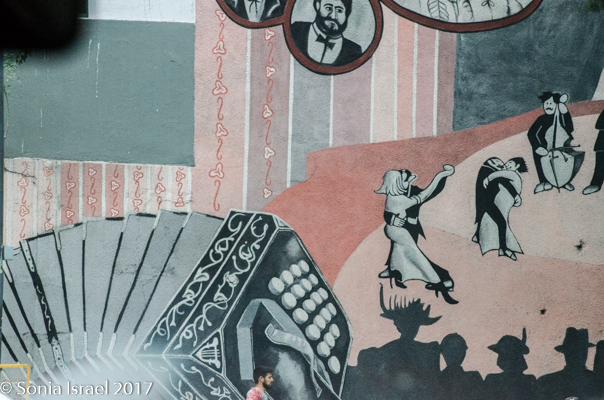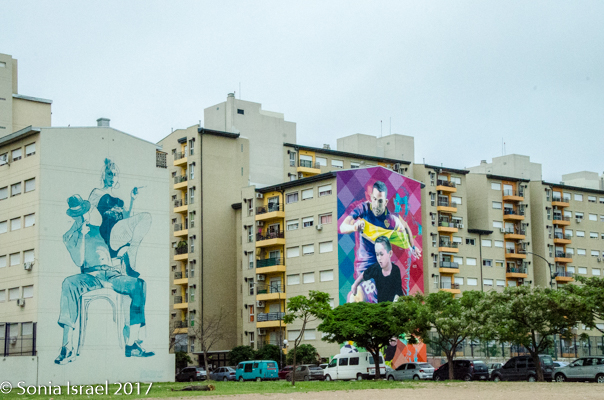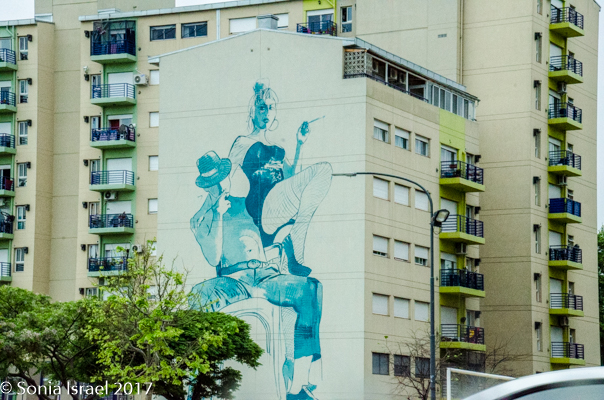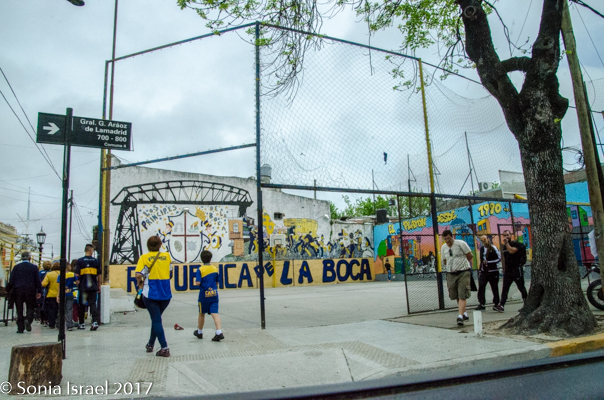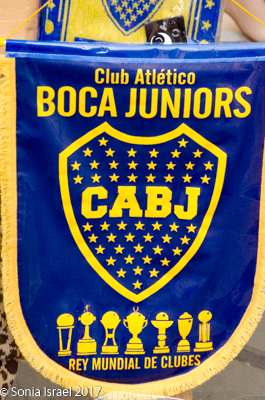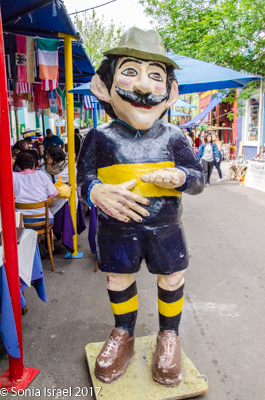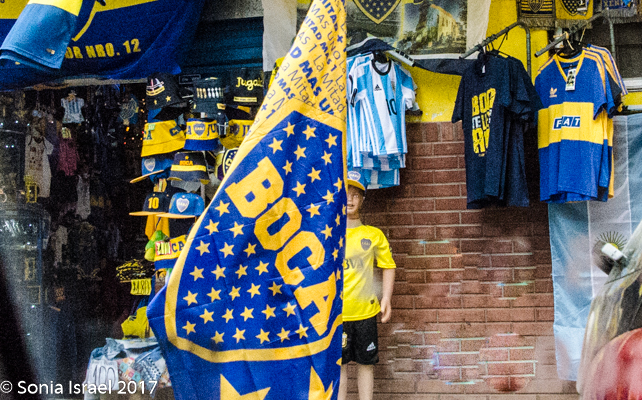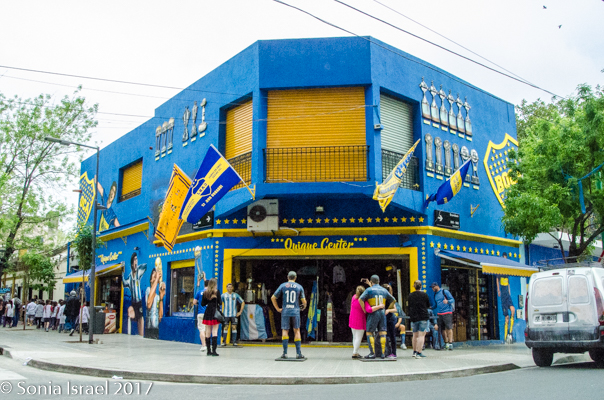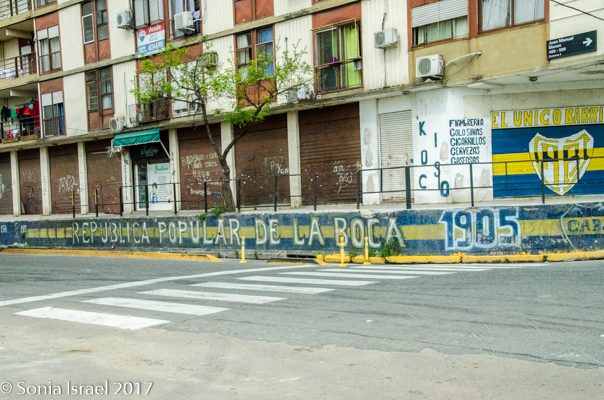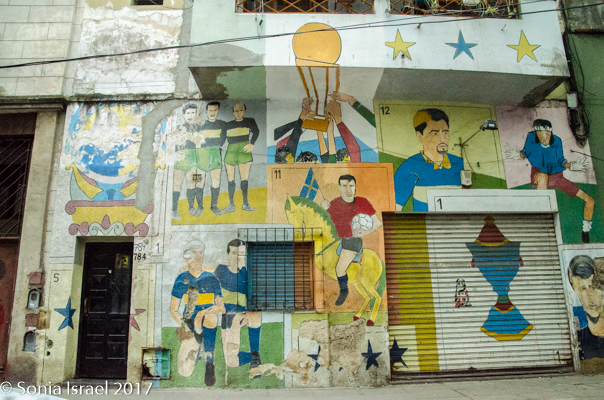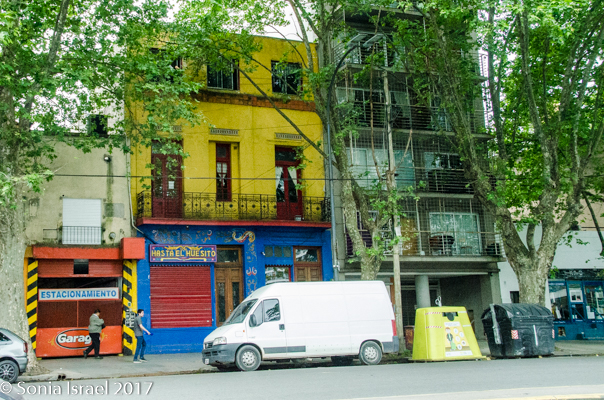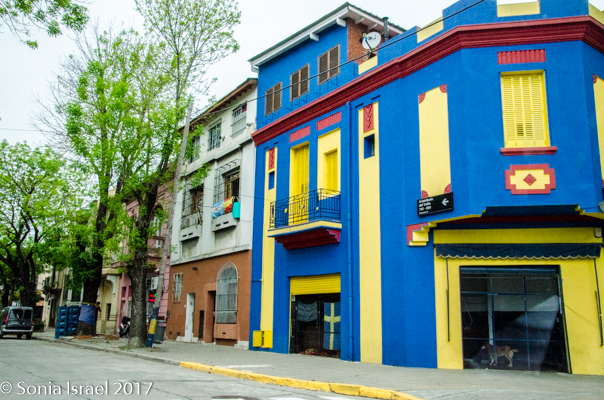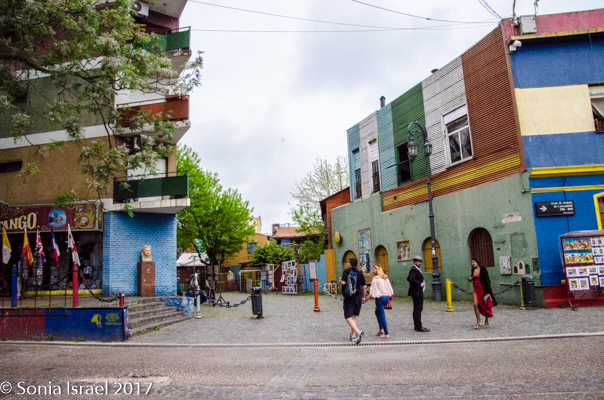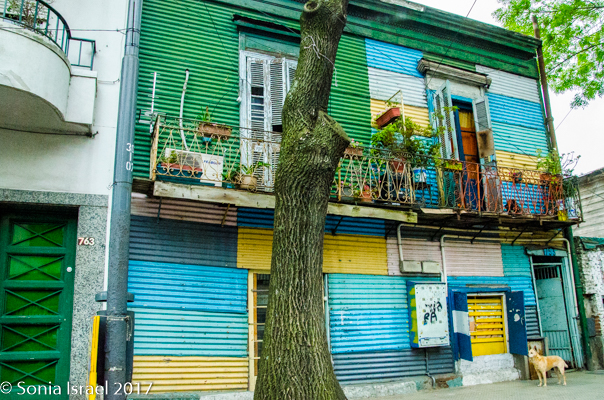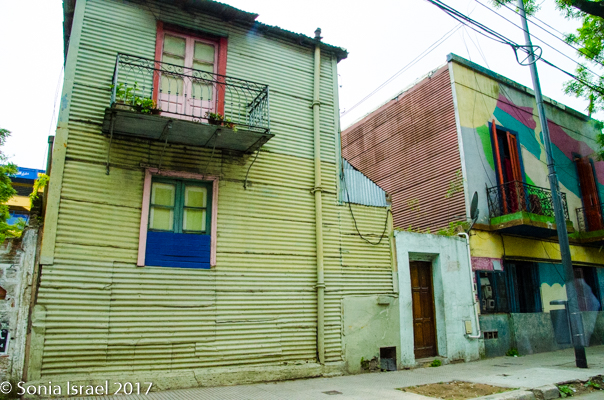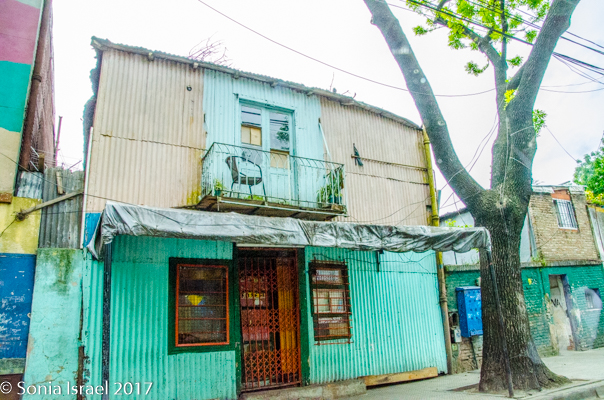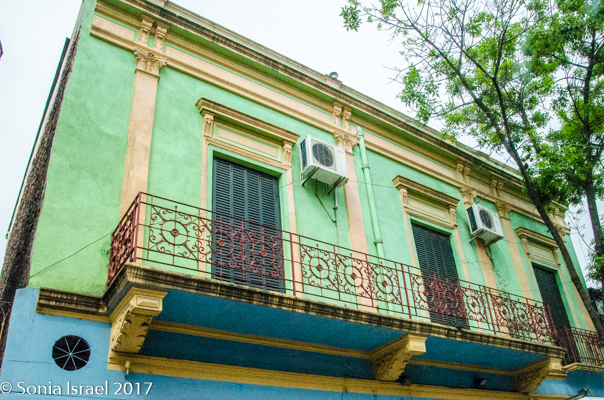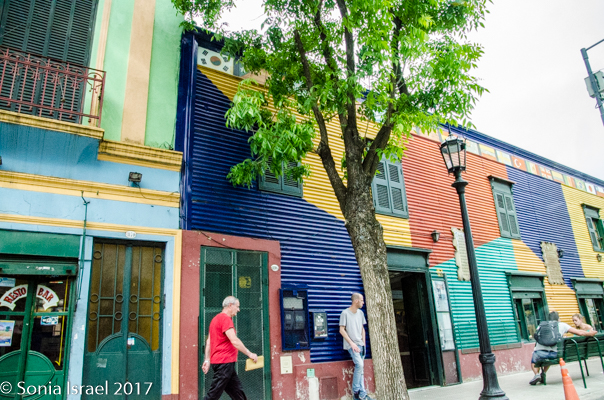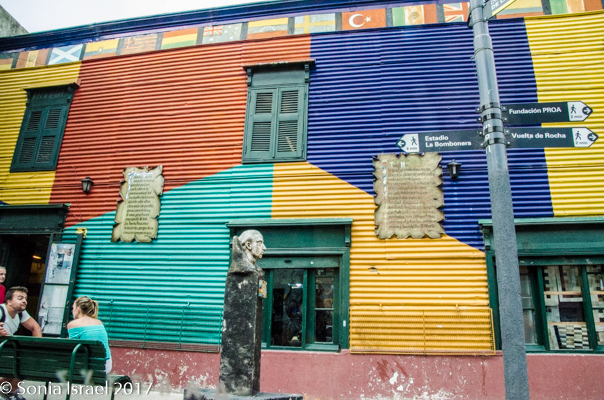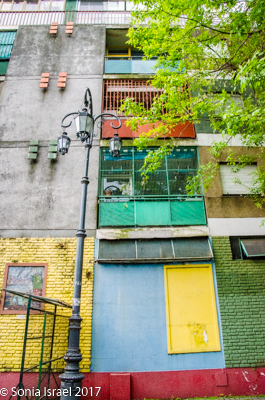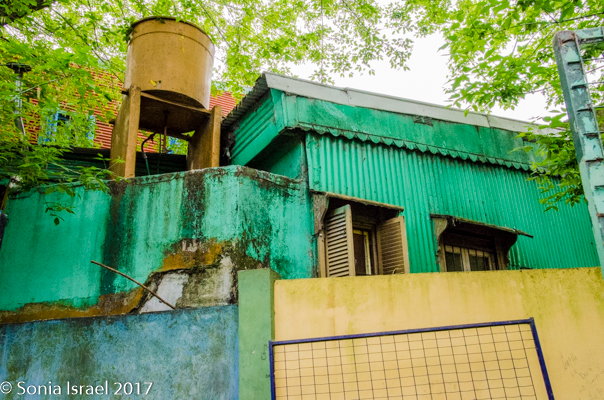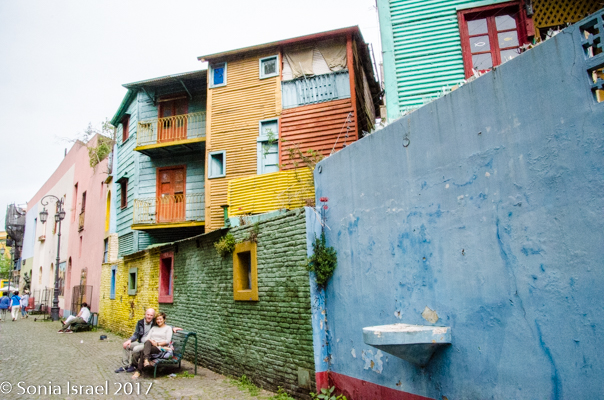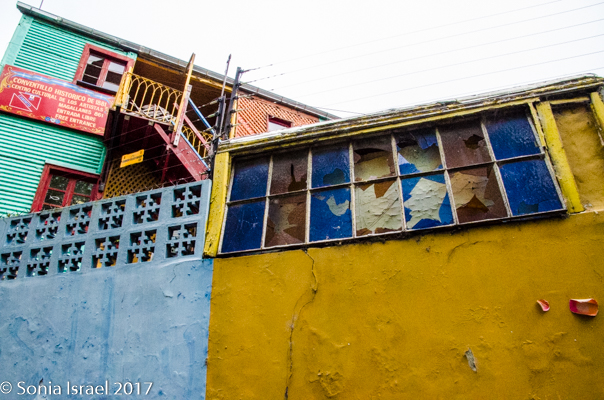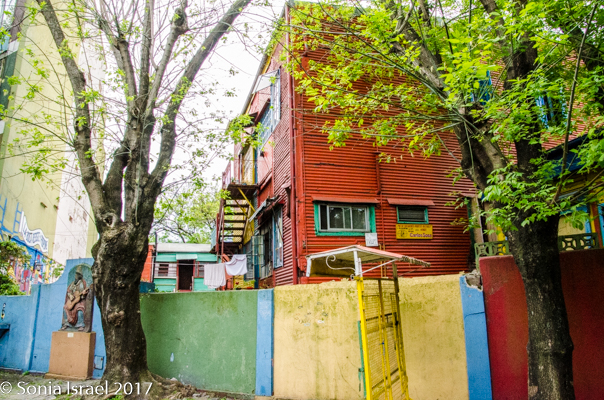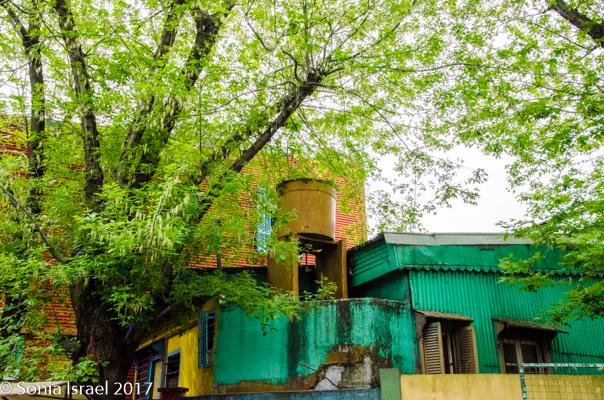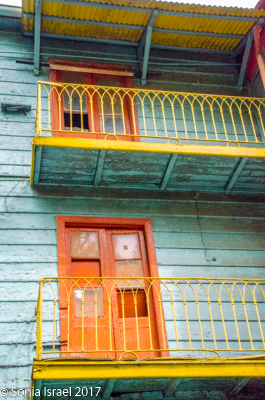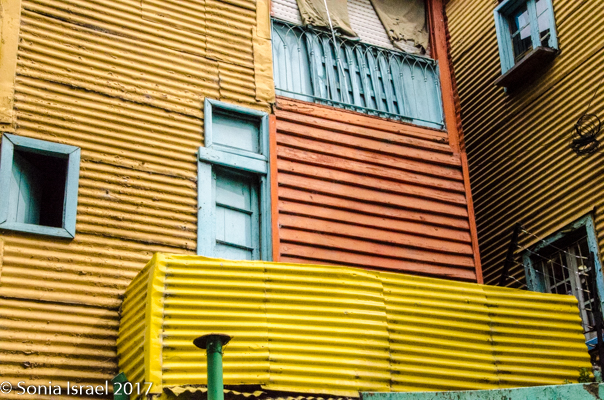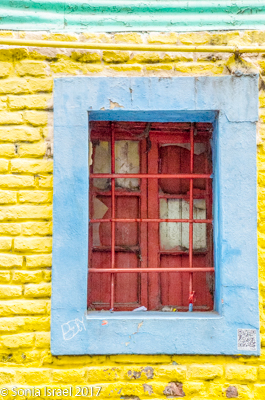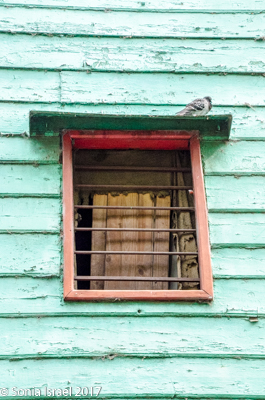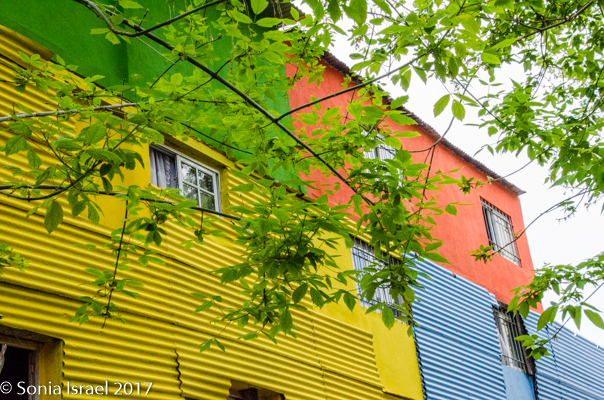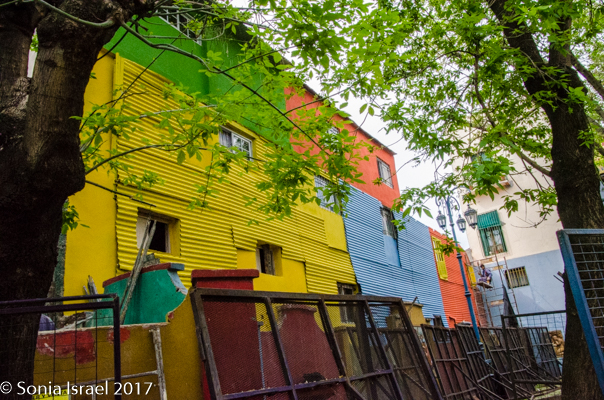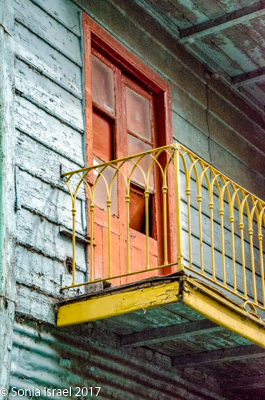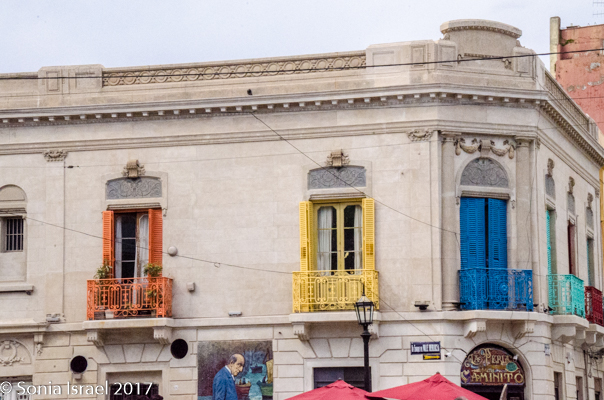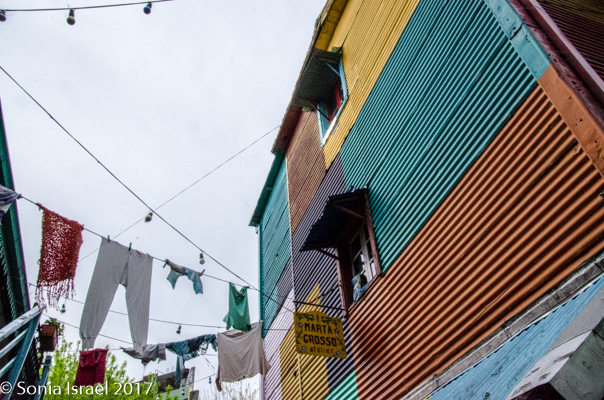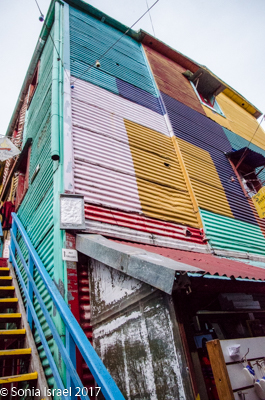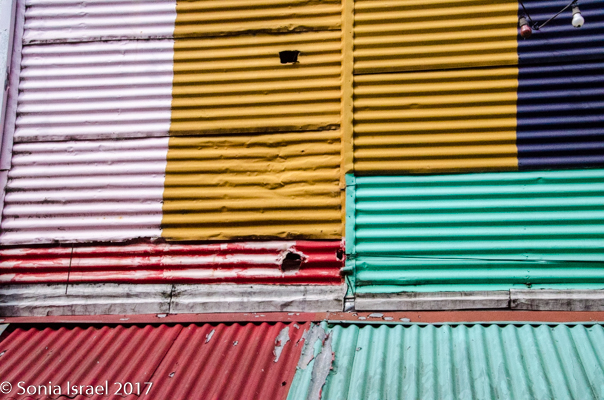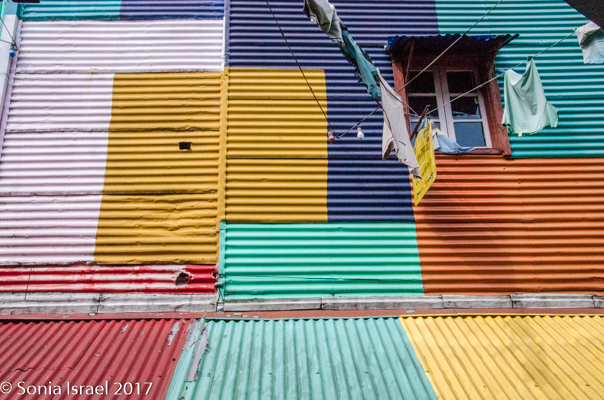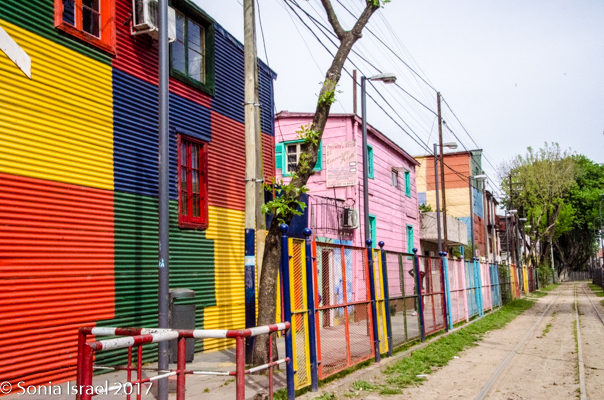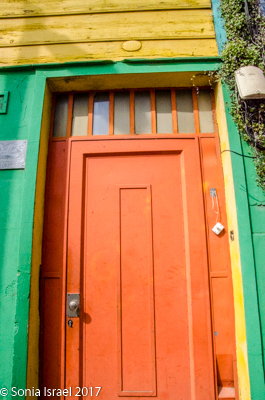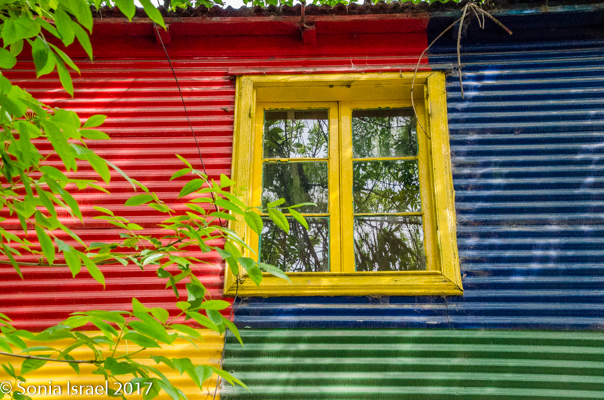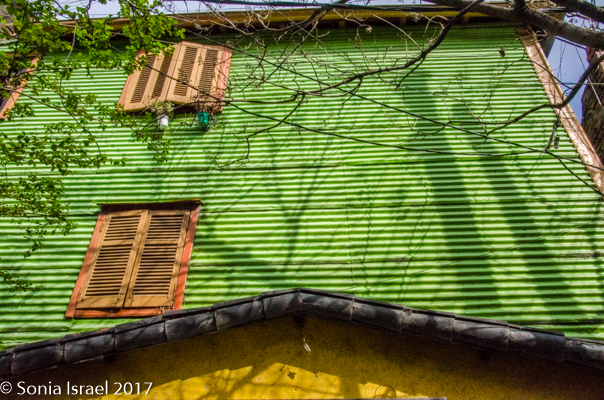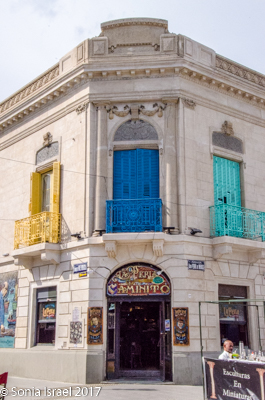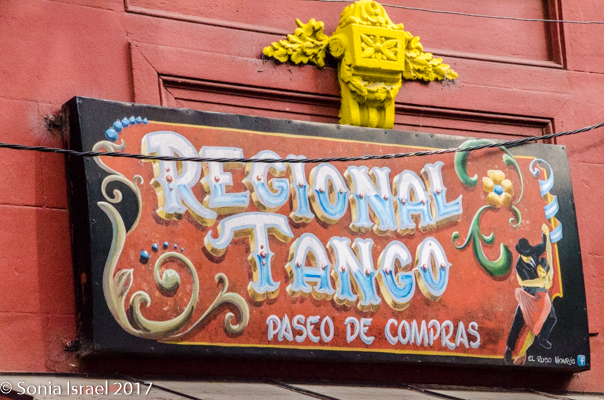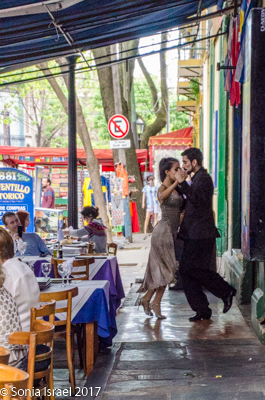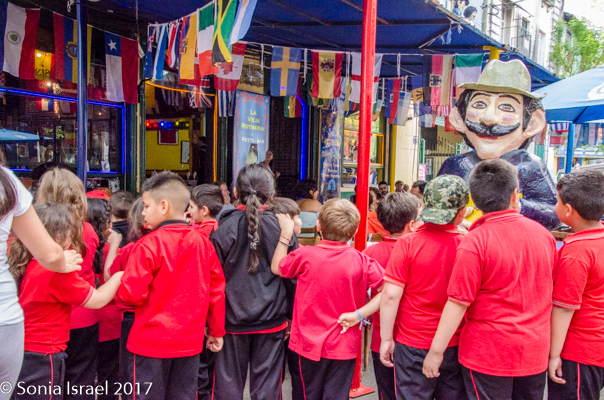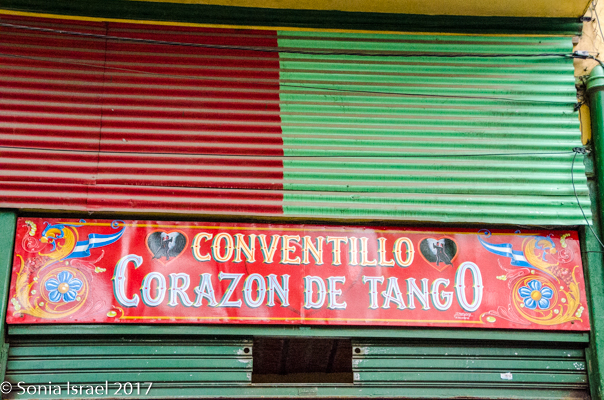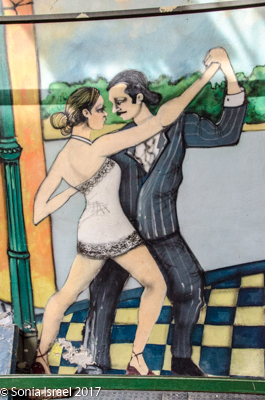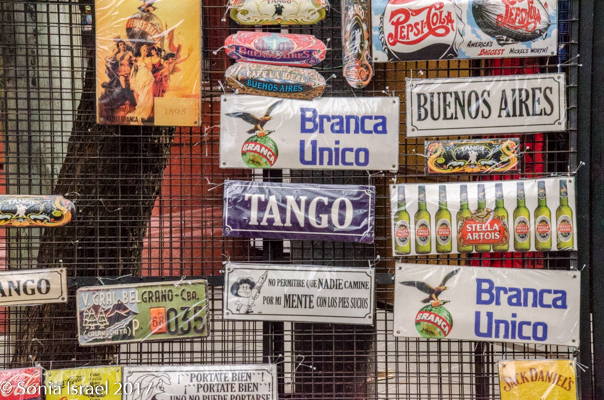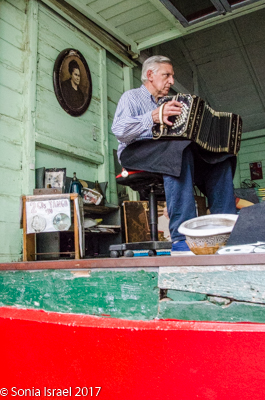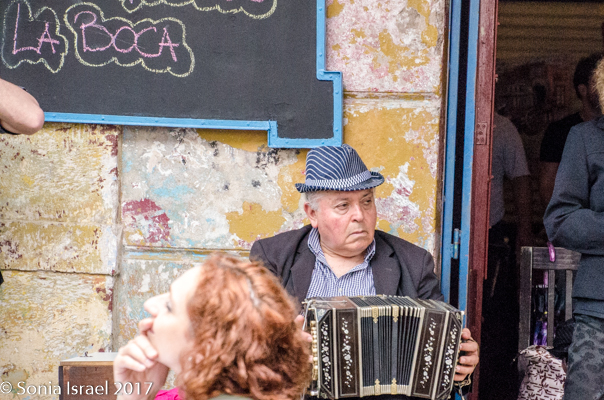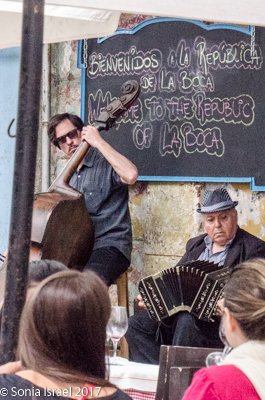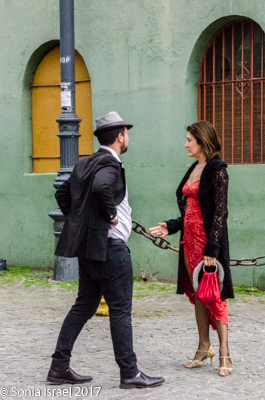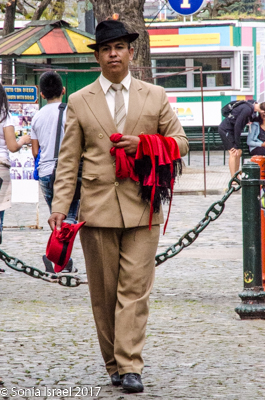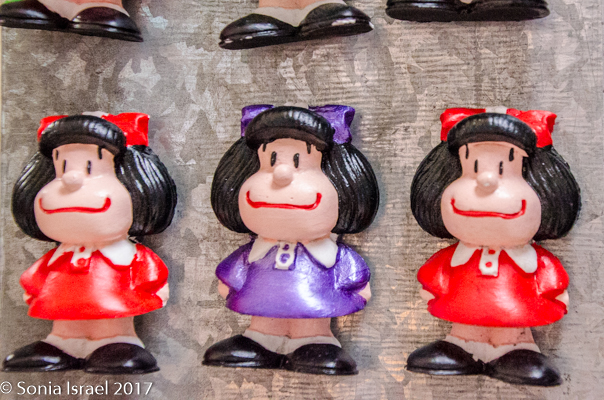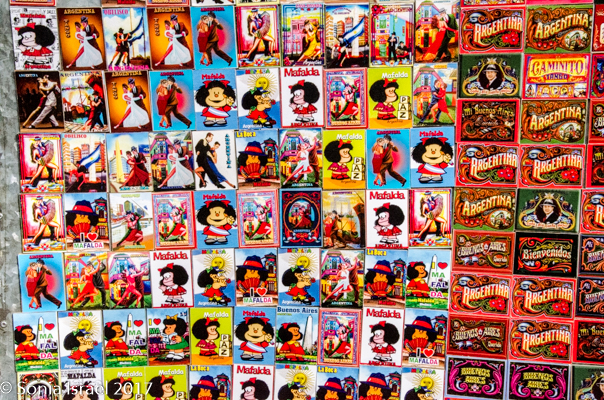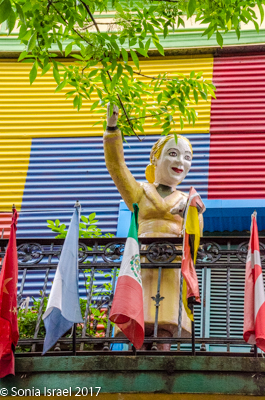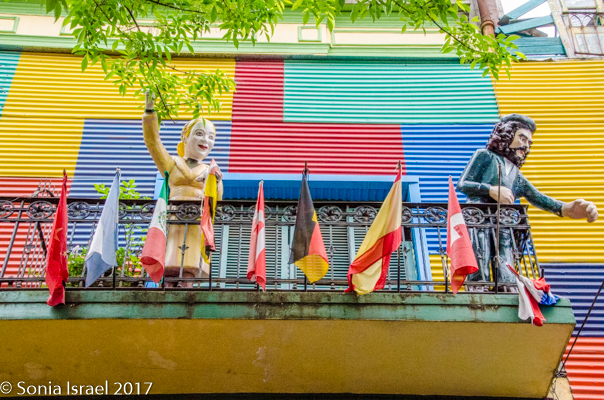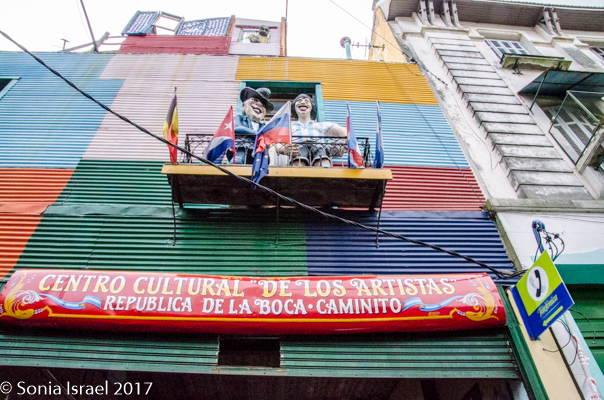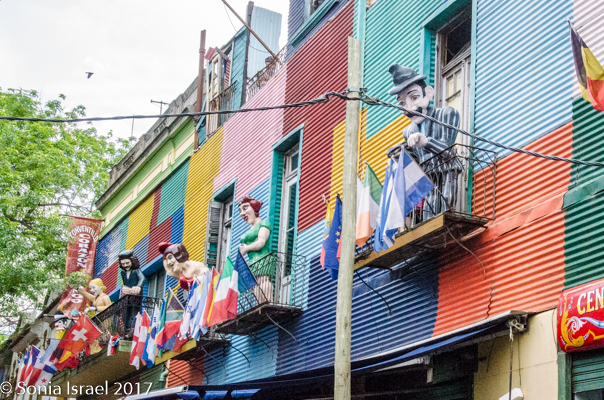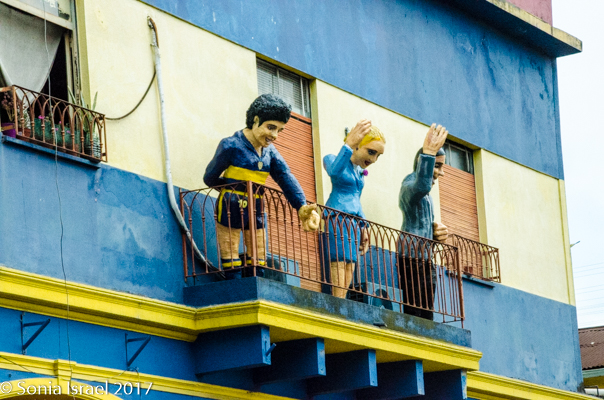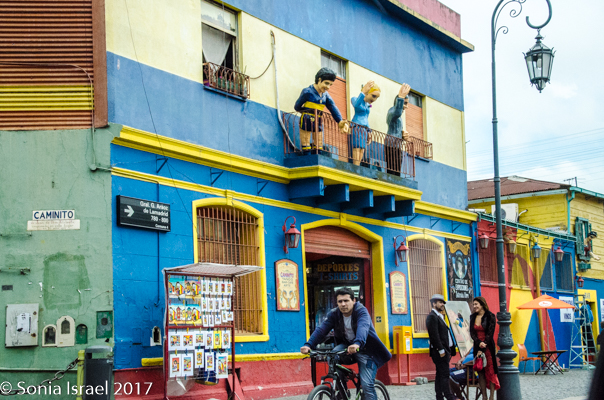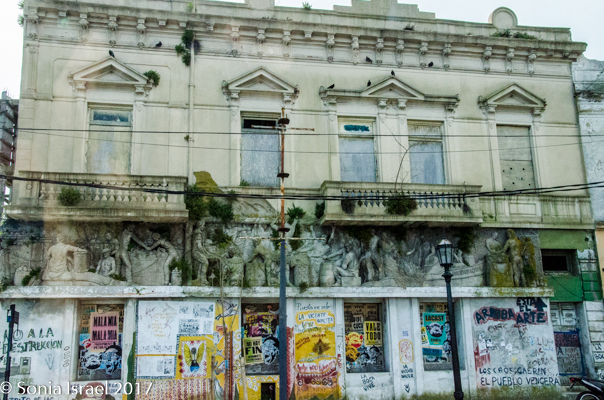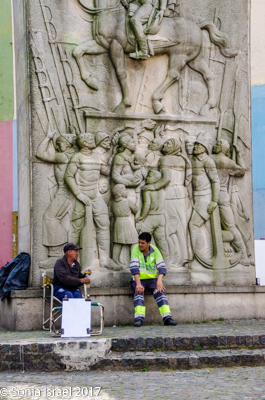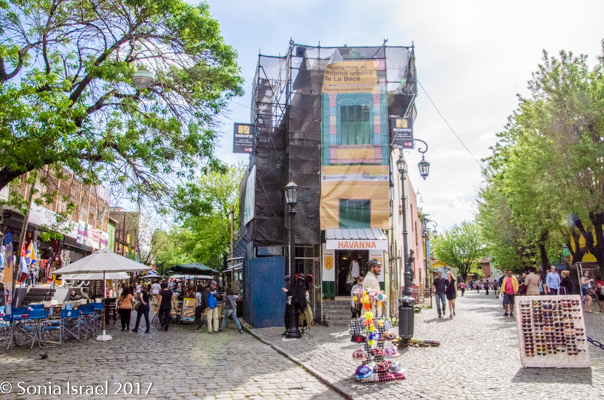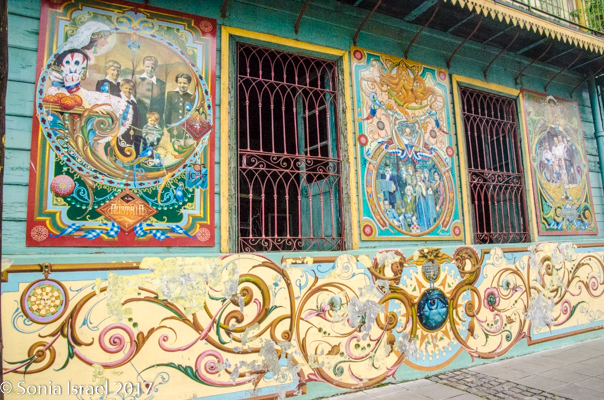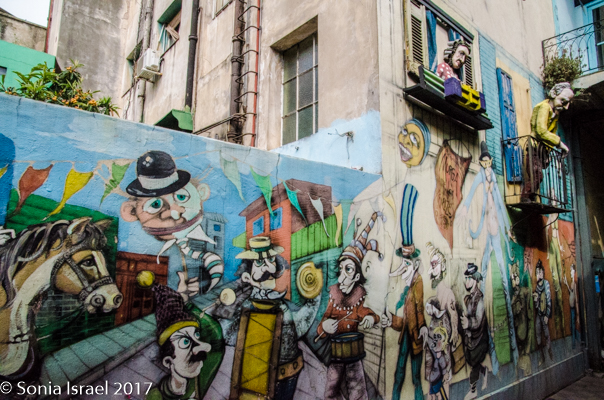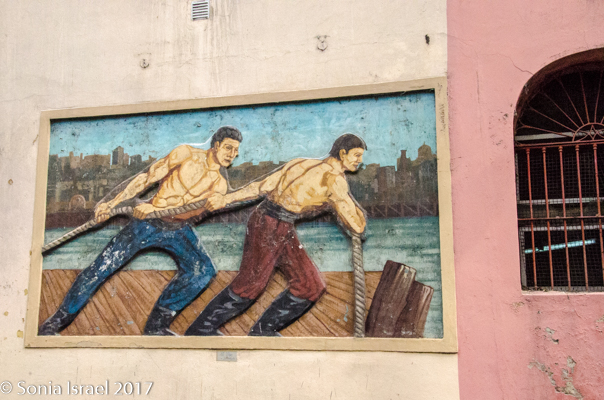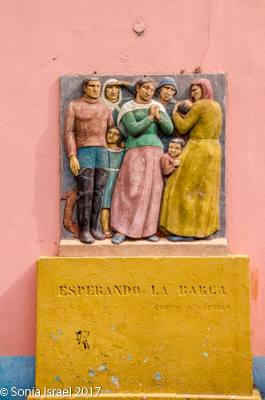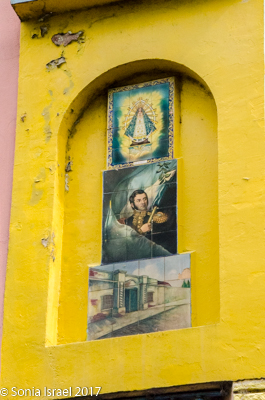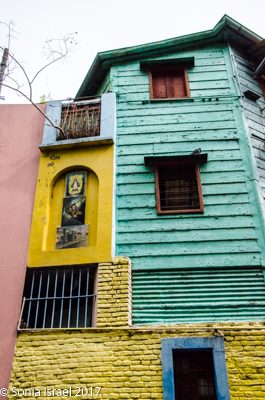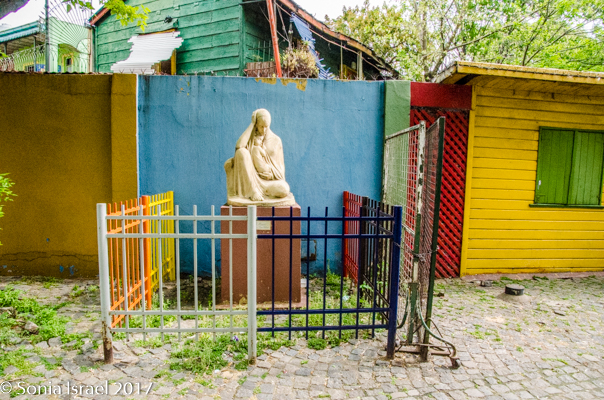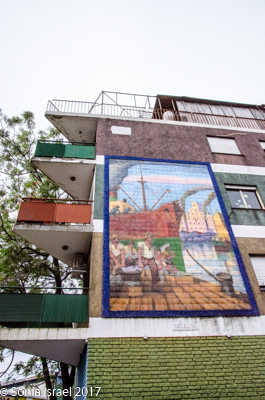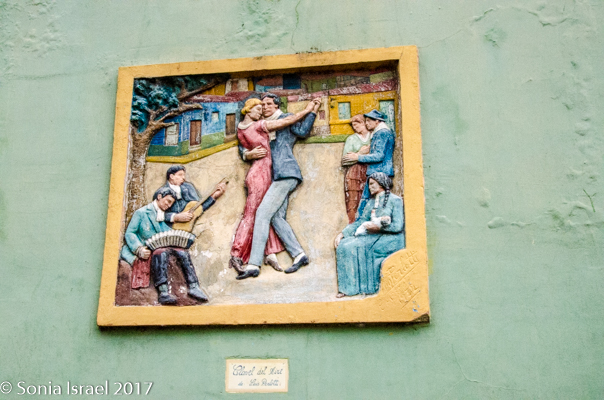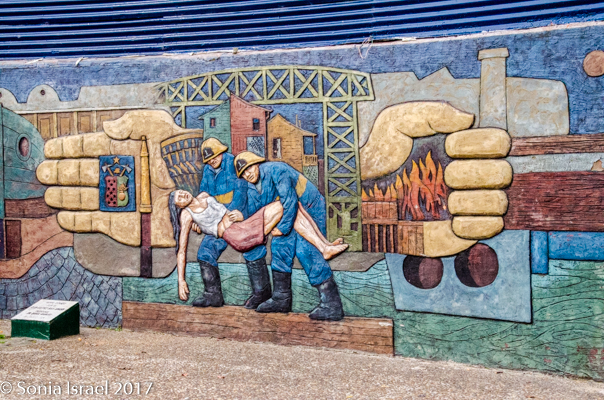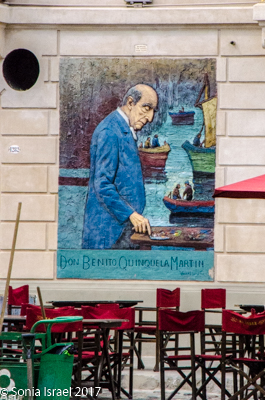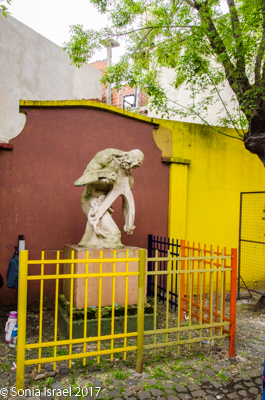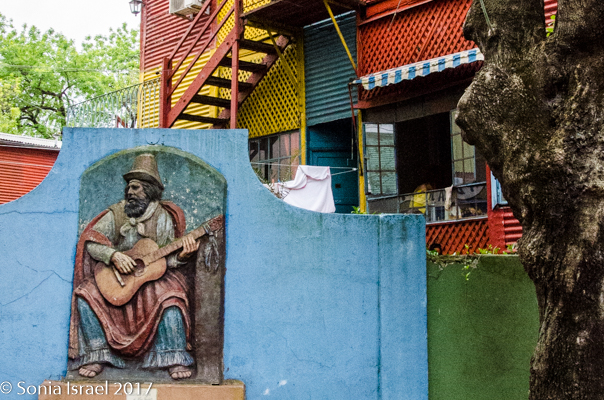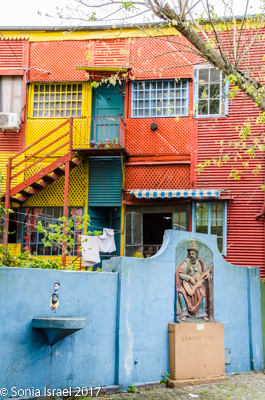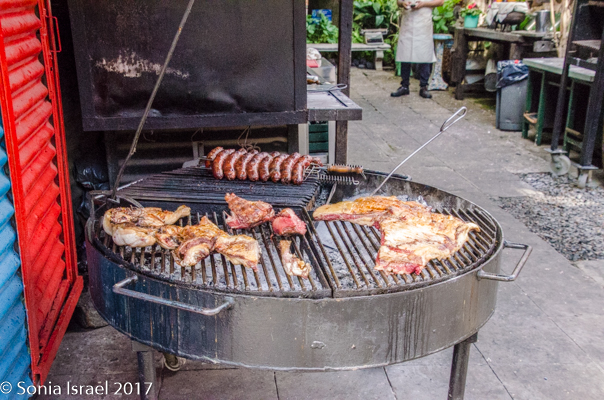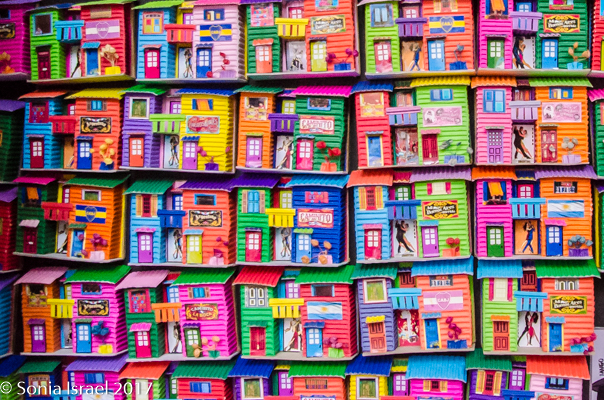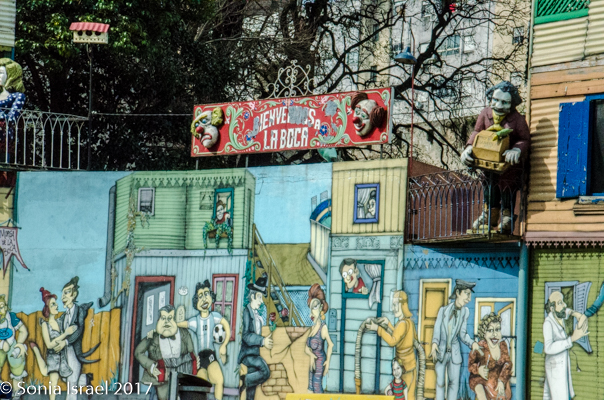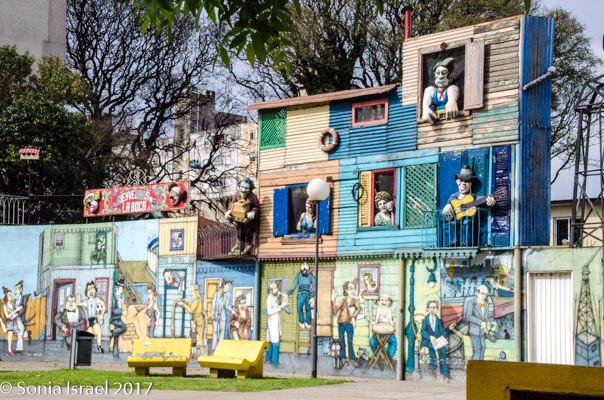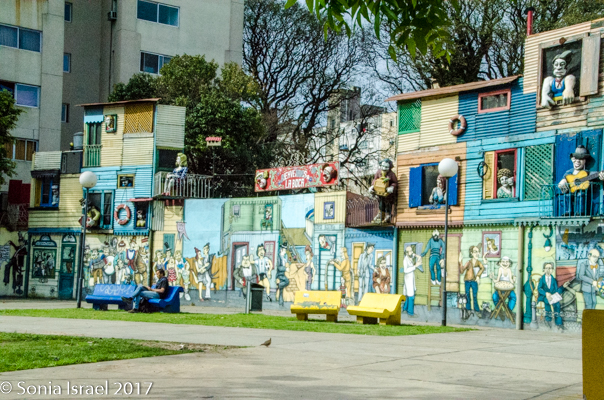October 17, 2017
La Boca
We approached the La Boca neighborhood, known as the barrio of Buenos Aires. As with most of Buenos Aires, it has a strong European flavor as many of the early residents were from Italy, specifically, Genoa, as well as from Spain, France, England, Ireland and other eastern European countries. While most people think it is called La Boca (the mouth) because the neighborhood sits at the mouth of the Matanza-Riachuelo River, another theory is that it was named after the Genoese neighborhood of Boccadasse (or Bocadaze in Genoese dialect).
Football
The first thing we saw was murals on the walls of the apartment buildings, of the most important things in Argentina – tango and football (ie, soccer).
And right down the street from them was the La Boca stadium, for the Club Atletico Boca Juniors. While tourists think of La Boca as the one colorful street (more on that below), among local sports fans, Boca is best known for being the home of world-renowned football club Boca Juniors, which plays in the stadium we were looking at, popularly known as La Bombonera (Spanish for “the bonbon box”). This club has been around since 1913 and is one of the most successful ones in Argentina. Jessica (that is, our guide, Jessica Cymerman) told us this was her team, but our driver favored another team which led to a very animated conversation. Soccer is so important here and everyone has their own favorite.
Color Everywhere
But we were really on our way to the part of La Boca that is full of color, the part that is a big tourist attraction (and we after all, were tourists). Our driver dropped us off and we walked onto the half-mile pedestrian street, called Caminito (which is also the name of a typical Argentinian tango) which is considered the soul of La Boca. It is famous for it brightly colored houses, and that is exactly what first hit our senses. Color, color, color. Not only was each house a different color, but even within the same house there were multiple colors. The houses are painted that way because the immigrants used the remaining paints found around the nearby docks to decorate their homes, which were made of metal. The streets are cobblestones at a lower level than the footpath to manage the periodic floods.
Tango
This streets are also full of tango-related souvenir shops, musicians and locals dancing the tango on the street. We stopped for a few minutes to watch one couple dancing. We were not the only ones enthralled by the sights. There was a group of school students, in their red t-shirts, also watching, and enjoying, and swaying to the music.
“Do you want to dance…”
And if one wants, for a few pennies, you can dance with them, costume and all. After all, La Boca was essentially the birth place of Tango.
Yes, tango started in Buenos Aires and is probably one of its greatest contributions to the world. Tango is a steamy strut that has been described as ‘making love in the upright position.” It started in the 1800s in the poorer areas of Buenos Aires. The upper class looked down at it as it was the dance of the lower class. But in the 1900s, it caught on in Europe, and suddenly everyone in Buenos Aires wanted to tango.
Mafalda
As I wrote in the main post on Buenos Aires (please see that post), Mafalda is a beloved comic strip character who is 6-years old. She was developed by a cartoonist Joaquin Salvador Lavado, known as Quino. Mafalda stole the hears of Argentinians during their most difficult time in the mid-60s to the mid-70s. Why? Because she reflected the Argentinian middle class and progressive youth, and was concerned about humanity and world peace. She loved the Beatles, Woody Woodpecker and pancakes. And she hated war, injustice, racism, and soup. At a time when Argentinians were not allowed to voice opinions, at a time when so many of them were disappearing, she was their insightful voice of social events. As a cartoon character, it was safe for her to question the state of the world at a time when real people could not. Thus, this little girl with her short black hair and a pet turtle named Bureaucracy (because it moves in slow motion) and restless mind became the symbol of many generations. We saw the image of Mafalda everywhere we went, on t-shirts, magnets, purses, all over La Boca. To this day, she is still an icon.
Evita…or Madonna?
There were a few spots were we saw statues (which looked like they were out of paper mache) of Madonna, as Evita, on a balcony. In the mid-1990s, hoping it would bring great fortune and fame to the country, the Argentinian Government allowed Madonna to stand on the balcony of the Presidential Palace (Pink House) to film the scene from ‘Evita’ that would define the movie. Here are just some of the lyrics she sang about Buenos Aires from that famous spot:
Fill me up with your heat, with your noise
With your dirt, overdo me
Let me dance to your beat, make it loud
Let it hurt, run it through me.
Don’t hold back, you are certain to impress
Tell the driver this is where I’m staying
To have two famous women, Evita and then Madonna playing Evita, all on that balcony – well that makes Argentinians proud. And in La Boca, the scene is recreated again and again.
Art, Murals, Statues
There was art all over the street. Murals on the buildings. Statues. And art being sold by local vendors and artists. Mostly we saw other tourists, but there were some locals milling about. There were workers sitting around on their breaks. And there were the tango dancers. And the sound of music was everywhere, along with the smell of beef cooking on the grill.
On the way out we drove past the block-long mock-up statues of La Boca. This is actually the entrance to La Boca, but it was easier to stop and take pictures on the way out. There really wasn’t a good place to stop at all, but our driver slowed down as much as possible and I shot the pictures out of the window.

